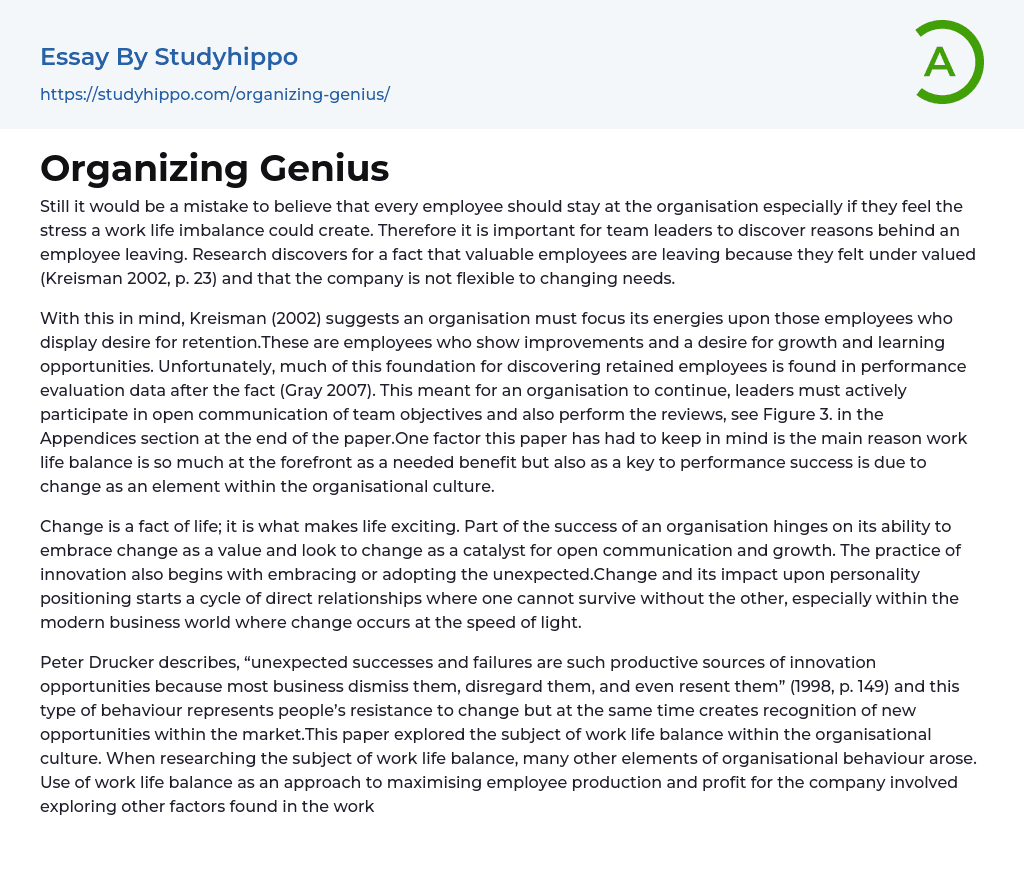Despite the notion that all employees should remain at the organization, it is incorrect. This is especially true if they experience the negative repercussions of work-life imbalance. As a result, it is crucial for team leaders to investigate the factors contributing to an employee's departure.
Research has shown that valuable employees leave because they feel undervalued (Kreisman 2002, p. 23) and that the company is inflexible to changing needs. To address this issue, Kreisman (2002) suggests that organizations should focus on employees who display a desire for retention - those who show improvement and a willingness to learn and grow. Unfortunately, much of the information about retained employees comes from performance evaluations conducted after the fact (Gray 2007). To ensure the organization's continued success, leaders must actively engage in open communication of team objectives and also conduct reviews (see Figure
...3).
One factor that this paper has considered is the prominence of work-life balance as both a needed benefit and a key to performance success. This is mainly due to its connection with change as a component of organizational culture. Change is an inherent part of life and brings excitement. The ability of an organization to embrace change and view it as a catalyst for communication and growth contributes to its success. Embracing unexpected situations is also essential for innovation. Change and its impact on personality positioning create a cycle of interdependent relationships, particularly in today's fast-paced business world.
According to Peter Drucker (1998, p. 149), unexpected successes and failures are valuable sources of innovation opportunities that are often overlooked, disregarded, or even resented by businesses. This resistance to change also creates awareness of new market opportunities.
This paper
examines the role of work life balance in organizational culture. While researching work life balance, other aspects of organizational behavior emerged. To maximize employee productivity and company profit, the use of work life balance involved exploring various factors in the workplace. Currently, it is challenging to determine the impact of work life balance on performance because it is a relatively new topic in literature and it also affects many other aspects of teamwork.
One conclusion is that maintaining employee motivation, job satisfaction, and retention is crucial. Further research is needed to fully understand the significant impact of these practices, but they are deemed essential for leaders to promote teamwork and retain employees. Considering this, it was believed that work-life balance would be challenging to achieve without these factors being present within an organization.
- American Dream essays
- Barriers To Entry essays
- Capitalism essays
- Central Bank essays
- Compensation essays
- Consumerism essays
- Economic Development essays
- Economic Growth essays
- Economic Inequality essays
- Economic System essays
- Economy essays
- Employment essays
- Export essays
- Finance essays
- Free Trade essays
- Gross Domestic Product essays
- Human Development essays
- Income Inequality essays
- Industry essays
- Inflation essays
- International Business essays
- International Trade essays
- Macroeconomics essays
- Materialism essays
- Max Weber essays
- Microeconomics essays
- Minimum Wage essays
- Monetary Policy essays
- Monopoly essays
- Pricing essays
- Profit essays
- Recession essays
- resources essays
- Taxation essays
- Trade essays
- Unemployment essays
- Warehouse essays
- World economy essays
- Collective Bargaining essays
- Corporate Culture essays
- Hard Work essays
- Job Satisfaction essays
- Organizational Culture essays
- Organizational Structure essays
- Sweatshops essays
- Workforce essays
- Working capital essays
- Working Class essays
- Working Time essays
- Workstation essays




